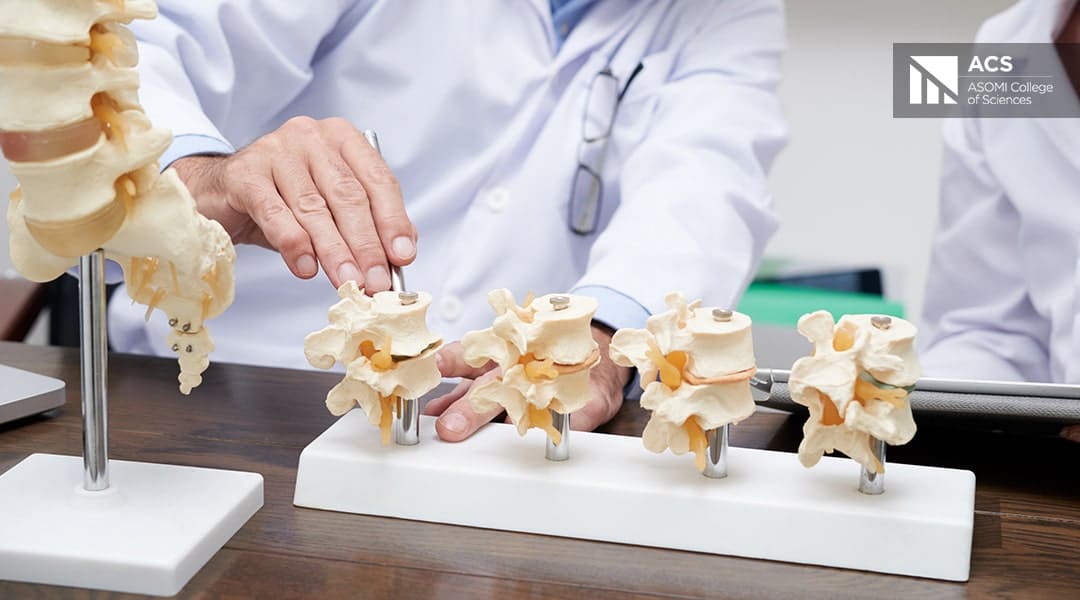Click here for the BSc (Hons) Osteopathy at ASOMI College of Sciences
About the author:
Claudio Colombi is an Italian osteopath working and living in Denmark. He pursued his diploma in osteopathy in 2000 at the CERDO – Centre pour l’Étude, la Recherche et la Diffusion Ostéopathiques.From 2010 to 2018 he has been the president of the Danish Osteopathic Association and in 2018 he managed to acclaim officially osteopathy as a profession in Denmark. He has more than 20 years of experience in his field.
Introduction to the osteopathy
Osteopathy, with its holistic approach and variety of techniques, allows us to treat acute and chronic symptoms and to promote the patient’s health.
Diagnosis is the first step in understanding the symptom, understanding its cause (s), evaluating the structure (s) involved, and relating it to the rest of the body.
The importance of the diagnosis
The more accurate the diagnosis, the more the working time will be reduced, thus the results will be satisfactory, both for the patient and for the therapist. An accurate diagnosis creates the foundation for effective treatment, and the birth of a strong bond between the patient and the therapist. All this happens during the first appointment. We evaluate the patient, and the patient, in turn, evaluates our professionalism, and our operational safety.
Each osteopath works differently. There is no right or wrong way, the approaches can vary, based on the character of the therapist, the techniques he uses, his work experience, studies, etc. This approach is nothing more than the result of constant research and study of the reasons for the symptoms presented by the patient, a path that has lasted for more than 25 years of research work and with over 120,000 carried out treatments.
The diagnosis in detail
In this article, by “diagnosis” I mean, in addition to the anamnesis, the set of various evaluations, the tests or/and manual and instrumental examinations, the semiotics, even the first contact with the patient, where communication and interpretation of the “present moment” are of fundamental importance.
The “diagnosis” occurs during the first visit, PHASE 1. The patient seeks help, an understanding of or a solution to his/her problems or pain. Most of the times, the patient has already undergone other treatments, specialized visits have had symptoms for years, or has undergone one or more operations that have compromised the functionality of the body on several levels; in some cases, the symptoms have spread to multiple areas of the body, etc.
These situations can create a diagnostic difficulty and certainly, variations in the communication and the explanation of the symptoms to the patient. I consider the communication with the patient a fundamental part of the “diagnosis”, for it creates the basis for the collaboration between the patient and the osteopath. It has been shown that the greater the patient’s trust in the therapist, the more the therapeutic results will be facilitated.
PHASE 1.
Anamnesis
Evaluations
Manual and instrumental tests and examinations
Semeiotics
Communication
How can we get the most out of STEP1? Through the analysis of the symptom(s), and the body response, we will analyze the reasons for the consultation, informing the patient of our therapeutic choice, working times, structure, and the treatment path.
As this article is informative, I will not go into details, but I will try to give an overview of this osteopathic approach.
We will focus on the symptom, a symptom that equals a problem. Therefore, we will first study it from a structural point of view relating it to the neuro-fascia – muscle – organ – joint structures that can be compromised, based on the type of symptom, that is, acute or long-standing. We will then interpret the inflammatory state, whether constant or periodical, which will give us an idea of the overload of the structure. Then, we will interpret how it worsens or improves, including its origin, whether mechanical or inflammatory or both.

Symptom equals problem
SYMPTOM = PROBLEM:
Mechanical / inflammatory / combination
Local or reflex
Level and structure concerned
Acute or chronic
Traumatic – degenerative – consequent (instability – hypo / hypertonia – postural etc.)
The practical evaluation of the symptomatic area will allow us to understand which structure is compromised and at what level.
We will begin to investigate the osteoarticular level, then the fascial, ligamentous, muscular plane, and then we will test the neurological response of the affected structure, with compression, stretching, and muscle tests, and we will analyze the thermal state and liquid “stasis” of the affected area for understanding the circulatory aspect and the inflammatory level.
All these aspects will be integrated with the type of structure, state, physical form, age, socio-working habits, and the point in the patient’s life.
The symptom is an integration of structural, biochemical (including genetics and epigenetics), and emotional aspects. As osteopaths, we could act effectively and directly on the structure, furthermore, by understanding the other aspects, that is, biochemical and emotional, we could help the patient by using techniques aimed at drainage or the neuro-vegetative nervous system. We would also be able to give advice, perhaps by integrating other types of treatment, to promote the patient’s health.
Different approaches
This is analytical due to its specificity of evaluation levels, global because it correlates the symptom with the patient’s state/form and integrated vision as it includes the biochemical and the emotional aspects.
Short hints and biochemical stress (allergies/intolerances – tissue poisoning – etc.) increase inflammatory reactions, altered levels of inflammatory cytokines explain the possible causes / contributory causes of the symptom and/or the reduced effect of the treatment, or the reappearance of the symptom(s). The same problems can occur with the emotional stress that negatively interacts on the hypothalamus-pituitary-adrenal axis with an alteration on the cortisol production.
The closer we are to this understanding, the more we would be able to understand and help our patients in a specific, global and integrated way.
Steps 2 and 3: treatment and maintenance
STEP 2. The treatment.
I spend very little time here because the topic is long and complex. At this stage, there is the choice of which techniques to use, where and how to apply them. This includes the way, the intensity, and the intention of the treatment. The clearer Phase 1 is, the more specific and effective the treatment will be.
PHASE 3. Maintenance – Prevention (brief notes)
At this stage, the focus is no longer on the symptom problem, it has been overcome. The focus is on how to improve/maintain the patient’s health. The treatment will seek to improve the functionality of the body on different levels. Postural, dietary, physical, and mental lifestyle advice will be integrated according to the patient’s needs.
Claudio Colombi DO M.R.O.DK




